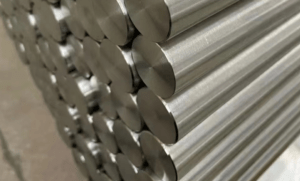Inconel and Incoloy are two high-nickel alloys that are very popular on the market. They are similar in some properties, but have significant differences in many other aspects. So, Inconel vs Incoloy – what’s the difference? In this article, we will provide a detailed comparison and analysis of these two materials.

Inconel vs Incoloy – What’s the Difference?
Inconel vs Incoloy – 1. Differences in Composition:
The most basic difference between Inconel and Incoloy is the composition of their ingredients.
Inconel (also known as Inconel alloy) is primarily composed of nickel, chromium, and iron, and may also contain elements such as aluminum, titanium, and tantalum. The addition of these elements enhances Inconel’s oxidation resistance, corrosion resistance, and high-temperature strength.
Incoloy is mainly composed of nickel and chromium, and may also contain small amounts of aluminum, titanium, and iron. Incoloy generally contains less aluminum than Inconel, which gives it unique advantages for certain applications.
Inconel vs Incoloy – 2. Differences in Performance:
- Corrosion resistance: Both Inconel and Incoloy have excellent corrosion resistance and can remain stable in a variety of harsh environments. However, due to differences in composition, they may behave differently in specific corrosive environments.
- High-temperature performance: As high-temperature alloys, Inconel and Incoloy can maintain good mechanical properties and stability in high-temperature environments. However, Inconel generally has higher high-temperature strength and creep resistance, which makes it more advantageous for high-temperature applications.
- Mechanical Properties: Both Inconel and Incoloy have excellent mechanical properties, including strength, toughness, and ductility. However, under certain conditions, such as low-temperature environments, Incoloy may exhibit better mechanical properties.
Inconel vs Incoloy – 3. Differences in Application Areas:
Due to the differences in composition and performance between Inconel and Incoloy, there are also obvious differences in their application fields.
Inconel is widely used in aerospace, petrochemical, nuclear energy, and other fields due to its excellent high-temperature performance, corrosion resistance, and mechanical properties, especially in environments that need to withstand high temperature, high pressure, and strong corrosion.
Incoloy is widely used in construction, chemical industry, marine engineering, and other fields because of its good corrosion resistance, mechanical properties, and processing performance.
Inconel vs Incoloy – 4. Processing and Weldability Differences:
In terms of processing and welding, Inconel and Incoloy also show different characteristics. Due to its high alloy content and high-temperature performance, Inconel is difficult to process and weld, requiring special processes and equipment. Incoloy, on the other hand, is relatively easy to machine and weld, which gives it an advantage in certain manufacturing processes.
Inconel vs Incoloy – 5. Differences in Cost:
Due to the differences in composition and performance of Inconel and Incoloy, there is also a certain difference in their costs. Generally speaking, the cost of Inconel is relatively high because it contains more precious elements (such as tantalum). Incoloy’s ingredients are relatively simple and its cost is relatively low, which makes it more competitive in some cost-sensitive applications.
Why Choose Huaxiao Alloy?
In summary, although Inconel and Incoloy are both high-nickel alloys, they have significant differences in composition, performance, application fields, processing and weldability, and cost. Therefore, when selecting appropriate metal materials, comprehensive considerations need to be based on the specific use environment and needs. In some high-temperature, high-pressure, and highly corrosive environments, Inconel may have more advantages; while in some cost-sensitive or applications that require good processing performance, Incoloy may be a better choice.
Thank you for reading our article and we hope it can help you to have a better understanding of the differences between Inconel vs Incoloy. If you are looking for Inconel & Incoloy suppliers online now, please don’t hesitate to contact Huaxiao Alloy.
As a leading supplier of Inconel & Incoloy products from Shanghai, China, Huaxiao Alloy provides customers with high-quality products like Inconel 602CA Alloy, Inconel 713LC alloy, Inconel Alloy 750, Inconel Alloy 718, Inconel 602 alloy, Inconel Alloy 600, Inconel Alloy 601, Inconel 625 UNS N06625, and Incoloy Alloy 925 (UNS N08925) at a very competitive price.



